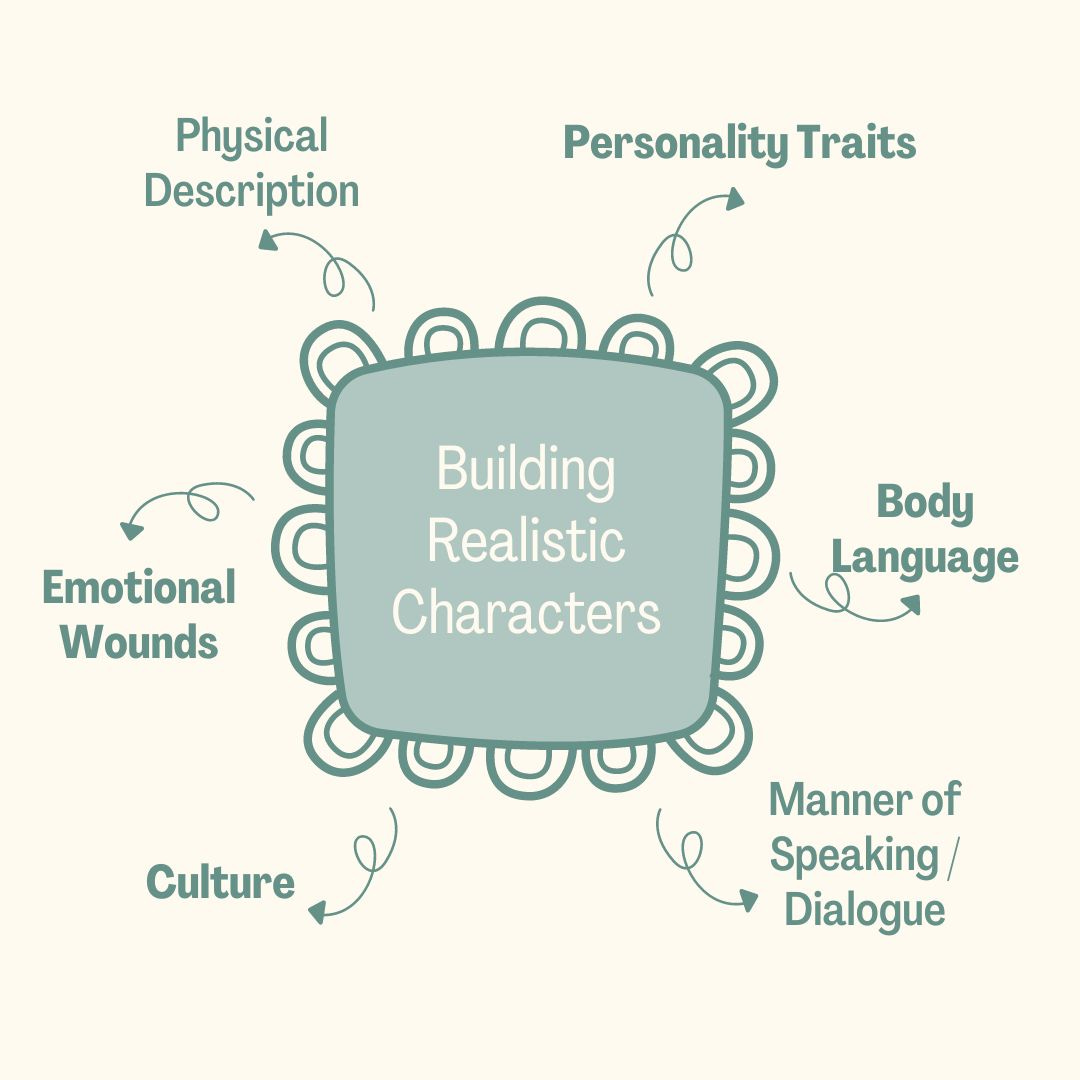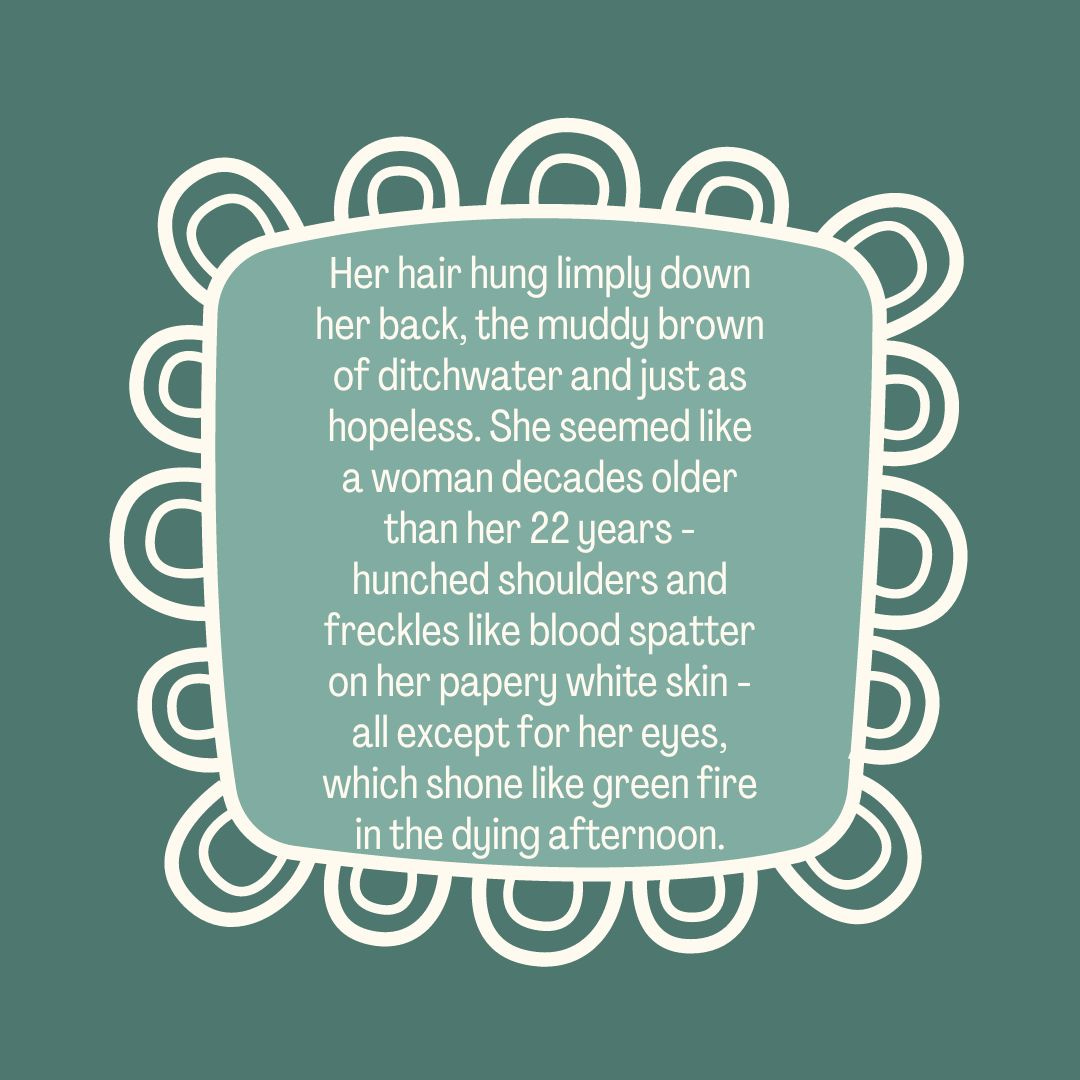Series: Building Realistic Characters
It takes more than just a pretty face! In this instalment, we talk about physical description and keeping a consistent story tone. Stay tuned for Parts 2, 3 and 4 coming weekly.
Hello and welcome! This month I’m diving into one of my favourite ways to prepare for a story (which is also one of my favourite ways to procrastinate actually writing said story): Character Sketches! In this instalment we’ll start off with the big one—physical description—while Part 2 dives into learning your character’s personality, Part 3 discusses body language and manners of speaking and Part 4 explores culture and that all-important Shard of Glass.
So let’s dive in!
Whether you’re a plotter or a pantser, getting to know your characters on a deep level is incredibly helpful for your story, and there’s something that feels so magical when all those individual pieces come together to transform a character from a plot device to a living, breathing person on the page.
Physical Description:
When I begin to create a character, often the first things that come into focus are aspects of their appearance. I’m currently in the (very!) early stages of my next novel—a second-world fantasy set over an isolated and treacherous archipelago of semi-sentient islands—and while I’ve known my main character intimately for some time, I had endless trouble figuring out her love interest. In fact, all I knew for certain was that he had chin-length unruly hair. Not much to go on!
Humans are highly visual creatures, and so approaching character development as though you’re looking at a painting can be an easy way in. Think about their body type, height, hair and eye colour, age and gender, skin tone and ethnicity. Then, try putting together a few of those qualities into a sentence. For example, something like: “She was a tall young woman with brown hair, green eyes and freckled white skin.”
Checks most of the boxes, right? We’ve got a good idea of height, age, hair and eye colour, and we know she’s caucasian. But now, we need to go deeper. What are the specifics? Where are the details that will start to develop this character into a real person, and also build on the story’s tone and her relationship to it?
Let’s look at one option:
Here we have a rather romantic and dreamy picture painted of this young woman. She’s relaxed in her world, graceful, daydreaming. This could easily belong in a romance or a coming-of-age contemporary novel. We have language that evokes the natural world—glinting sunlight, flecks of gold, mossy green, legs like a colt—and it’s rich in colour and sensory description in a comforting kind of way. Compare this to:
This is an entirely different woman, and an entirely different story. The language is darker, not complimentary at all and evokes a vague sense of threat. Words like hopeless, hunched shoulders, blood spatter and papery white skin could belong in a gritty mystery, gothic thriller or dystopic
sci-fi/fantasy. But as different as it is from the previous example, both character sketches introduce questions into the narrative, namely, Why.
Why is she flushed? What is she daydreaming about? Where is she that the sun is shining down so beautifully on her? Or, why is her back hunched? Why is her hair limp and dirty? Why are her eyes the only sign of fierce life in her face?
As you go deeper into your physical descriptors, keep in mind also the specificity of your language and how it relates to your story. I eventually decided my sea-story’s love interest has black hair, but what kind of black? Instinct (and probably crutch words, to be totally honest) had me reaching for “the soft blue-black of a raven’s wing at dusk,” or “the velvety black of smooth charcoal,” but as evocative as these images are, do they make sense for this story? In a world where dry land is not only rare but unpredictable, would there even be ravens or charcoal? Perhaps I’d be better using the “deep and penetrating black of a seal’s knowing gaze.”
Similarly, you wouldn’t want to allude to something being as loud as a jet engine in a 1700s historical fiction, or the crimson of spurting arterial blood in a rom-com (unless it’s a gory horror-romance mash-up, in which case, A+ for creativity).
So start by jotting down some basic details about your character’s features and body, and then play around with the language. Which brown in particular is their hair? The belly of a mother sparrow? The shimmering hues of a chestnut? The flat ochre of a rain-starved summer road? See which jump out at you, and which intensify the vibe and tone of your story.
(Side note: This decade-old blog post from Ingrid Sundberg has her colour collection with descriptive names for dozens of shades, and it’s just so fun.)
Keep sketching out details until you can visualize your character standing in front of you, and then get ready for next weekend when we explore getting to know their personality. Happy writing!
**Sidney Writer Group members: Please forgive the multiple incoming posts! I found that in trying to distil a 1.5-hour presentation into a newsletter, it quickly became unwieldly and far too long. So I’ve split it into four parts. I hope you find it helpful!







Great breakdown!